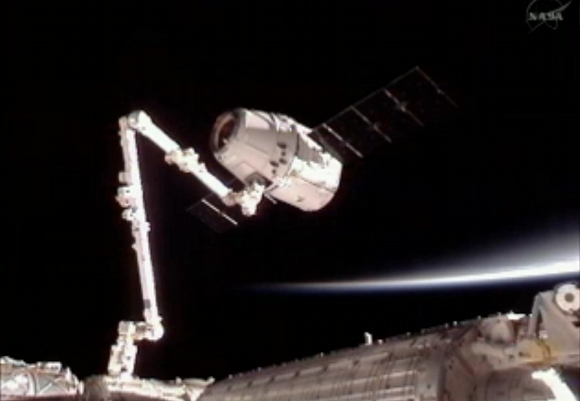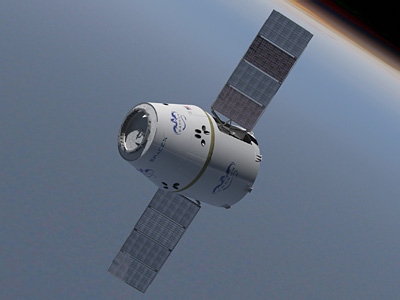Lewis Page at The Register, with a well-timed reminder that work in space is still not routine or ordinary:
The Falcon 9 rocket from upstart rocket firm SpaceX, which lifted off yesterday with supplies for the International Space Station, will deliver those supplies successfully following loss of an engine during launch. However a commercial satellite which was also aboard the rocket has been placed into a lower orbit than planned as a result of the mishap.
As we previously reported, the nine-engined Falcon first stage suffered an engine failure as it climbed towards space, with launch video giving the impression that one of the Merlin rockets had lost its nozzle. The Falcon is designed to carry out its mission even having lost an engine, and the flight path was duly adjusted. The Dragon capsule with supplies for the International Space Station was successfully sent on its way and is expected to reach the ISS without trouble.
[. . .]
Orbcomm says it is investigating the possibility of getting its satellite into the right place using its own onboard propulsion. Even if this can be achieved, however, it will be unsatisfactory as a satellite’s own fuel must be sparingly eked out over its operational lifespan to maintain it in orbit. Using up a lot of it before even beginning operations is liable to mean a short working life for the Orbcomm bird.





